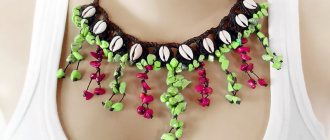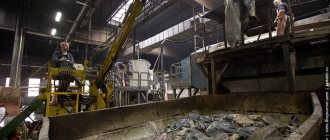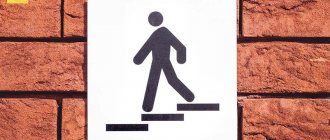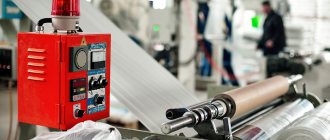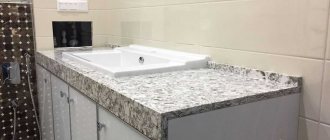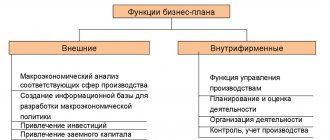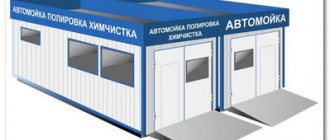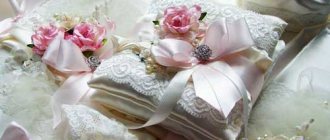When decorating surfaces today, gypsum tiles are used. It is sold ready-made or made with your own hands at home.
This is its peculiarity, since gypsum tiles can take on different sizes, shapes and types. When developing a form, you can achieve an imitation of natural stone, wood and other building materials.
In this article we will talk about the features of this finishing material and how gypsum tiles are made at home.
How to start a gypsum tile production business
Gypsum is present in many construction mixtures because it is an environmentally friendly and inexpensive material. Gypsum decoration elements have the property of absorbing moisture from the room if it is in excess. If the humidity in the room decreases, the plaster releases it back.
You can make products from gypsum at a large enterprise or at home. The main thing is to have the necessary materials and equipment available. On an industrial scale, a large number of different types and reliefs of tiles are usually produced; at home, production is aimed at producing one type of stone from gypsum.
Gypsum tiles are practically no different from natural stone and fit perfectly into the design of any room. If there is a large relief on it, then you can successfully hide the unevenness on the walls. The production of finishing material is carried out taking into account the characteristics of its use in the interior. The number of required modules, their weight, relief and size are taken into account. It is necessary to pay attention to the features of the room. If there is too much moisture, you need to add special polymers that will increase the gypsum’s resistance to it.
Using gypsum products you can design:
- openings of windows and doors;
- flights of stairs;
- columns;
- indoor niches;
- fireplaces.
In the production of gypsum stone, mixtures with different compositions can be used. If durable tiles are required, the composition should contain more cement. Polymers are added for lightness and elasticity.
To establish mass production, you need to rent specialized premises. For successful operation, you need high-quality wiring and the presence of water. To produce tiles, you need a lot of liquid, so it is necessary to have a fresh water supply in the room, otherwise large costs will be required for the delivery of process water. It is better to look for a room somewhere on the outskirts of a populated area, so as not to receive complaints from neighbors about constant noise. Delivery of finished products to customers will be carried out by freight transport, so premises in the city center are not necessary.
It is imperative to properly prepare the workplace. You need a table for work; it is set as level as possible. This is done so that the plaster in the mold is even. The temperature should not be lower than +15°C and higher than +25°C. Humidity should not be higher than 60%. The presence of air conditioning and drafts is also undesirable. Only high quality materials should be used for manufacturing . To ensure that the finished tile is not too brittle, you need to use plasticizers. In this case, slaked lime will do.
To operate a tile production enterprise, workers are needed to organize the process. You will need to hire at least 2 workers, each with their own responsibilities. One person will have to deal with making the mixture, preparing molds, carrying materials and loading finished products. The second worker must have a construction education so that he can correctly calculate the proportions for the gypsum mixture, as well as correctly pour it into the molds.
We also recommend reading the article on the topic: “Making paving slabs.”
Workers: is it possible to make tiles yourself?
Due to the simplicity of the technological process, many businessmen prefer to do everything themselves to avoid additional expenses on employee salaries. Gypsum tiles to look like stone or brick are made quickly, but the process requires 1-2 pairs of hands.
The first task is to calculate the required proportions of water, lime and gypsum, as well as dye if necessary. His responsibilities will include pouring the finished mixture into molds and leveling its surface. It is better if the employee has a construction education, this will help avoid mistakes and violations of production technology. The second assistant does the rest of the work; given the sale of gypsum tiles, there are no special requirements for his qualifications.
What equipment to choose for the production of gypsum tiles
To open a business producing gypsum tiles at home, you need to purchase some materials and equipment:
- a silicone or polyurethane mold in which the tiles will be cast;
- ingredients for making the mixture: fresh water, lime, gypsum and dye;
- container in which gypsum will be mixed;
- acrylic varnish with a matte effect to protect products;
- brushes for lubricating the mold with paint;
- To level the surface of the tiles in the mold, you need a spatula.
What is the status of my source of income now?
Today I have many different shapes and more than one thousand tiles under my belt. I have decent experience.
And, by the way, I note that in not a single review have I ever seen in what proportions and how the components are mixed, how much and where gypsum specimens are dried, or how they are transported.
The price for my gypsum tiles ranged from 500 to 2500 rubles per square. It depended solely on the buyer. And I didn’t register my business. Having saved a decent amount, I suspended the business and began building my own house.
Periodically, upon request, I return to tile production. Now I have cleanliness and order. All containers are measured, there is no overspending, and at the beginning of production there was none, not counting the first silicone mold.
Gypsum tile production technology
Before you start producing gypsum stone, you need to buy molds into which the mixture will be poured. They are made from silicone or polyurethane. Polyurethane molds are much more expensive than silicone ones, but they are used not only for working with gypsum mixtures, but also with cement-based solutions. Polyurethane molds are durable and suitable for repeated use. For home use, it is better to purchase silicone molds.
If you already have several tiles, you can use them to make a mold yourself. To do this, place a sample of tiles at the bottom of a sealed bath and fill it with a polyurethane mixture. It can be purchased at any hardware store. Depending on which polyurethane is used, the bottom of the bath and the sample must be lubricated with a grease-containing substance or soap solution. This is done so that the form can more easily lag behind the bathtub and tiles.
After preparing the workplace and purchasing equipment, you can begin preparing the mixture. For this:
- Gypsum and slaked lime are mixed in a ratio of 6:1. Water should be added at the rate of 1 liter per 700 g of gypsum.
- If required, dye is added and the mixture is kneaded until smooth.
- Next, polymers are added and thorough kneading continues so that there are no lumps. The mixture should look like liquid sour cream.
- After preparation, the mixture can be poured into molds. If necessary, the surface is leveled with a spatula to achieve maximum evenness.
The mixture sets within 20-25 minutes, so it must be quickly poured into molds.
For the gypsum mass to completely harden, it takes at least 20 hours, provided that there is dry air in the room. After 23 hours, the finished tile can be carefully removed from the mold. After removal, you need to give it another day to dry completely. When producing on an industrial scale, special drying machines are used. You can use heat guns for your home. Do not dry items in direct sunlight.
Step-by-step instructions for making gypsum tiles
Let's look at the stages of home production.
All work has the following sequence:
- Filling with mortar.
- Drying.
- Painting.
Filling with mortar
First, a gypsum solution is prepared.
Its recipe:
- 6 parts plaster.
- 1 part slaked lime.
- In relation to gypsum 1:0.7 parts of clean water.
note
When making tiles, you can immediately add color to the mixture. But painting is done after drying.
It is best to use a construction mixer to mix all components. This will allow you to achieve the required consistency of the mixture. There is no need to stir for a long time.
Pour the mixture into the prepared molds and level with a spatula. After mixing, the solution must be used as quickly as possible, as it will begin to set. The dried solution should not be diluted with water.
During the kneading process, it is necessary to achieve the consistency of sour cream. There should be no lumps in it. It is not recommended to knead at high speeds of a construction mixer. This may introduce air bubbles into the mixture. Because of this, the finished tiles may have voids in them.
Drying
The pouring process must be done on a flat horizontal surface. This can be a flat screed or a table.
The gypsum setting process takes 20 minutes. It takes about 24 hours to dry completely. It is recommended to leave the filled forms in a dry place.
note
When pouring, it is necessary to avoid the formation of air bubbles. If you do not have a vibrating table, then after pouring it is recommended to shake the molds several times, this way all the air will come out.
Due to this, when drying there will be no voids inside or on the front side. After one day, the tile can be removed from the mold. This must be done carefully, since gypsum is relatively fragile.
Painting
The base color of the tile is white. You can paint over the plaster while preparing the solution by adding color. But painting can be done after the drying process.
For painting, you can use water-soluble liquid or dry paint pigments. Painting can be done using a brush. Painting is also done using a spray gun. Your goal is to apply the paint evenly and without drips.
It is recommended to paint in a well-ventilated area.
How much can you earn from producing gypsum tiles?
The production of building material from gypsum is highly profitable and quickly pays for itself. The average rate of reaching zero is 2 months. Monthly income when producing 100 sq. m of product is 60 thousand rubles. You can increase the profitability of an enterprise by increasing the range of products. Sales of products through retail chains also have a positive effect on the company's profitability.
To learn more about investing, we have compiled a selection of free materials for you. You will be able to get answers to many of your questions and learn a lot.
What kind of plaster is needed?
You can use any brand of building gypsum. There are expensive brands of gypsum, and there are cheap ones - what's the difference?
Gypsum Magma G6 B3
On a bag of plaster it is usually written, for example, “gypsum g-16” or “gypsum g-6”. The number means the hardness of the gypsum after drying, g-16 is a very strong gypsum, products made from it are more difficult to break than, for example, from g-6. If you are planning to make a stone for yourself (not for sale), then use the cheapest gypsum, yes, products made from it will not be as strong, but the gypsum is cheap and once you glue the stone to the wall, you will not break it.
If mass production for sale is planned, then it is better to use gypsum of a higher strength to make the stone stronger. The fact is that a stone can break during transportation, and imagine a situation where you made a delivery, the buyer checks the goods, and there are a lot of broken tiles.
For sale, some stone makers use cheap gypsum, adding various plasticizers and additives, such as SVV-500, to increase its strength. You can read about this here.
I also want to say about the color of the plaster. At first I used Samara gypsum g-16, the tiles turned out gray after drying. Now I use Magma G6 B3 (molding), after drying the color of the tiles is white. I like working with Magma, it is finely ground gypsum, hardens a little slower and costs 3 times less than Samara g-16.
Advantages and disadvantages of artificial stone
Decorative gypsum stone for interior decoration has a number of significant advantages that distinguish it from natural stone:
- Light weight. Indeed, this is a very important indicator that determines the load of the facing product on the surface. Thus, there is no need to carry out complex preparation of the walls and strengthen the structure. This significantly reduces the cost of all work.
- No complex processing. During installation, trimming and fitting are performed without the use of special equipment. If the fitting is incorrect, all defects can be corrected using a gypsum solution.
- An excellent decorative component.
It includes not only a wealth of textures, but also a variety of colors. If necessary, you can paint it yourself, creating a completely individual interior. In this case, the surface can have a sawn, chipped, rubble or random appearance. The technological process of manufacturing and painting gypsum tiles allows you to create any imitation of natural stone, as well as implement bold design ideas - Possibility of self-production. The production technology is not particularly difficult, but it allows for significant financial savings.
- Moisture resistance. During subsequent processing, the resulting coating withstands exposure to water, completely retaining its qualities. This is what allows for wet cleaning.
- Environmental friendliness. All components are absolutely safe for humans. It should be noted that gypsum has the ability to absorb excess moisture from the room and, if necessary, release it. This helps create a certain microclimate.
- Durability. The service life of an artificial product with proper installation and compliance with operating conditions is tens of years, which is significantly less than that of the natural version, but quite sufficient.
Of course, we must not forget that the material also has disadvantages:
- Fragility. This is one of the main problems of decorative stone made of gypsum; the tiles have little resistance to mechanical stress. If improperly transported or stored, the product is easily damaged.
- Exposure to sudden changes in temperature. The material is used exclusively for interior work.
Gypsum tiles that are exposed to weather quickly deteriorate, so they cannot be used outdoors!
Thus, decorative gypsum stone is an excellent solution for decorating a room, provided that certain nuances are observed.
Documents required for the legal activities of the company
If you do not plan to engage in additional areas of business or enter foreign markets, then an individual entrepreneur is the best option for your business. You need to write an application, prepare copies of the TIN and passport, as well as pay the state fee and keep the receipt. The prepared package of documents is transferred to the Federal Tax Service, and the tax inspector informs the funds and statistical authorities about your registration.
To draw up an application to the Federal Tax Service, you need to know which code according to the all-Russian classifier is assigned to your activity. In this case, the production of gypsum products falls into the category with OKVED code 23.6.
In addition to the listed documents, you need to fill out papers with Rospotrebnadzor and the fire inspectorate. Additional permits and licenses are not required for the production of gypsum products.
Advertising and business promotion
A fairly significant stage at the initial stage of business development is advertising and promotion. It is very important that potential customers learn about your products as soon as possible and start placing orders. The time to reach the level of profitability depends on how correctly the marketing campaign is carried out.
To promote, promote and stimulate sales, you can use absolutely all the tools that exist today. If you manage to raise capital, you can advertise on local television and radio. Advertisements in construction magazines and newspapers are also very effective. If you wish, you can launch a company website and promote it on the Internet. Statistics show that the Internet contributes to a fairly large number of customers and stimulates sales. Don’t forget about social networks, which are a free source of traffic. Distribution of printed leaflets will serve as inexpensive and effective advertising.
To attract regular customers who will order large volumes of products, you can create a price list and price list and distribute them among companies involved in the construction and renovation of premises, as well as the development of design projects.
Production process
The technique of making decorative figures from gypsum (artificial materials) takes place in several stages:
- Mixing the solution.
- Filling the matrix, drying.
- Impregnation of the product with special protective agents.
- Painting, varnishing.
The full production cycle is 3 days. Preparing, pouring and processing the figure does not take much time, while drying will take at least 3 days.
The main production problem is the high cost of matrices. The way out for a novice businessman is to make his own templates. The template materials are plaster, paper, and papier-mâché technique. Such forms do not have longevity, but can temporarily replace an expensive matrix.
Mini business plan
By combining all components of a business into a common process, rational interaction is ensured to achieve an efficient production economy.
The main questions to focus on are:
- The workshop, its correct location and arrangement.
- Raw materials and everything for working with them.
- Equipment, since without it it is impossible to establish production output.
- Staff. Experienced employees mean quality products.
- Manufacturing technology - an experienced technologist, a faithful assistant in the work.
- Sales of products - by following the previous steps, the products will not stay in the warehouse.
On video: My earnings from plaster figures. Earnings from 200,000 rub. per month
Various types of products are cast from gypsum, but the most profitable production is large, dimensional objects, including rosettes for walls and ceilings, decorative parts of columns and also the columns themselves used for decoration, figurines for the garden, piggy banks and other artistic products:
- all kinds of huge panels decorating the walls;
- borders for decorating ceilings;
- pilasters;
- domes.
All products manufactured without the use of now outdated casting processes. It is possible to open the production of figurines made of plaster, stucco, making souvenirs from plaster and decorative tiles.
On video: Stucco molding. How to start a business. Secrets of a professional
Optimal taxation system
Along with the business registration documents that you submit to the tax office, do not forget to prepare an application for choosing a tax regime. It could be:
- UTII (in some regions of the country).
- The simplified tax system is the most rational regime, which allows you to pay 6% of revenue or 15% of the difference between gross income and expenses to the treasury (check for documents confirming the amount of expenses).
- General taxation regime. In this case, you will have to hire an accountant, which is expensive and irrational.
Please note that if you do not submit your application to the Federal Tax Service in a timely manner, you will automatically be assigned a general tax regime.
